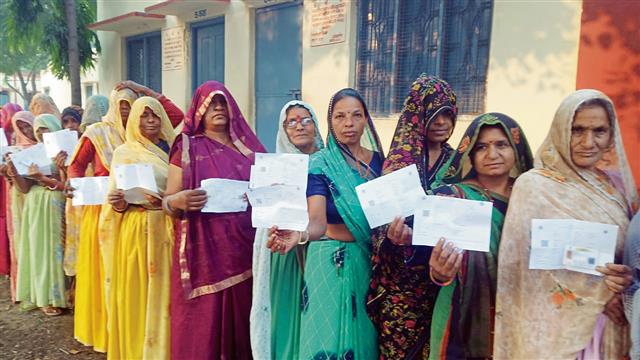“Fixed dates for elections to assemblies and federal parliaments are a more common feature than simultaneous elections at different levels of the political structure in a country. Canada, a federal polity with a parliamentary form of government, has enacted legislation at both the federal level as well as in its provinces, providing for a fixed date for holding of elections, with the date now varying from province to province and following a different timetable for federal elections. In Australia, the terms of the federal Parliament and the state legislatures (most of them) are three and four years, respectively, thus ruling out simultaneous elections.”
The high-level committee on ‘One nation, one election’ (ONOE) has sought public suggestions regarding constitutional amendments and other arrangements for giving effect to ONOE. The main rationale for suggesting ONOE are time and cost savings. Since these factors are applicable globally, it bears noting that almost nowhere among federal parliamentary democracies are simultaneous elections held at the federal and provincial (state) levels. Indeed, the 79th report of the Parliamentary Standing Committee on Personnel, Public Grievances, Law and Justice, which looked into the matter of simultaneous elections, could cite only two cases from across the globe — South Africa and Sweden.
The South African elections, offering universal adult suffrage, began only in 1994 and the African National Congress, which led the freedom struggle, has continued to win throughout the country at both the federal and provincial levels (barring Western Cape). This is a situation not dissimilar to that of India during the first 25 years after Independence, when the Congress largely won across the country. The more competitive political scenario in India thereafter started showing up hung assembles (and even Parliament), floor-crossing, etc., resulting in dissolution and elections and at different times for Parliament and states as a gap of more than six months without a legislature in place, both at the Centre and in the states, is considered unacceptable for a democracy and not allowed in the Indian Constitution.
Sweden has a unitary form of government with municipalities and regions, but the latter are not like provinces in a federal polity and don’t have a hierarchical relationship. Essentially, both are forms of local government undertaking different types of tasks. And the Swedish Constitution allows for early elections, but these are for the balance of the dissolved term.
The Indian parliamentary panel’s report also refers to the UK’s decision in 2011 to have a fixed term for its Parliament. The report was submitted in 2015. Two years later, the UK Parliament, barely in its second cycle under the fixed-term enactment, overrode the Fixed Term Parliaments Act, which was repealed in 2022. The devolved assemblies in Scotland, Wales and Northern Ireland, in any case, follow their own timetable.
Fixed dates for elections to assemblies and federal parliaments are a more common feature than simultaneous elections at different levels of the political structure in a country. Canada, a federal polity with a parliamentary form of government, has enacted legislation at both the federal level as well as in its provinces, providing for a fixed date for holding of elections, with the date now varying from province to province and following a different timetable for federal elections. In Australia, the terms of the federal Parliament and the state legislatures (most of them) are three and four years, respectively, thus ruling out simultaneous elections.
The model for a ‘fixed date and tenure’ election that readily comes to mind is of the US, where presidential and gubernatorial elections are only held every four years and a system is in place for successors to take over if a President or Governor becomes non-functional. Lasting the full course through a succession process is possible, though it sometimes results in anomalies such as Gerald Ford becoming President in 1974 without having contested the election ‘at the level of the people’. It, moreover, bears noting that elections to the House of Representatives in the US Congress and state assemblies are held every two years. Given the US tradition of primaries, the country is practically in the election mode every other year. Interestingly, despite major efforts to build a consensus on simultaneous polls to the Lok Sabha and assemblies, the parliamentary committee’s best case was polls in two phases — for some states around the time of the middle of the Lok Sabha’s term and for others with the Lok Sabha elections.
It is believed that a separation of federal and provincial elections ensures that voters are not cross-influenced by leaders or issues of the national election with the one in their state or province or vice-versa. Studies indicate that this is likely to happen when the regional party (or parties) in the fray doesn’t have a distinct identity and a cause that the voters can easily identify with and so differentiate between parliamentary and Assembly elections.
Nevertheless, the idea that time and costs should not be unnecessarily incurred on repeated elections is a laudatory one. From experiences in Germany and, more recently, in Nepal, constitutional provisions that provide for greater political stability may be possible segues. For example, the German Basic Law and the 2015 Nepali Constitution only permit positive votes of no-confidence — such a motion must be accompanied by the naming of the next leader. Then there is the issue of setting the right precedent.
In the UK, as also in Canada, attempts to fix the terms of Parliament were thwarted by the Commonwealth tradition of the Prime Minister having the right to dissolve the House and seek a fresh mandate. In Nepal, while the same tradition was sought to be invoked, its Supreme Court disallowed it on two occasions during 2021 and asked the House to elect a new leader. This ensured that the House elected in 2017 sat through its full five-year term with no additional expenditure on mid-term polls.
(The author is a former Ambassador)
